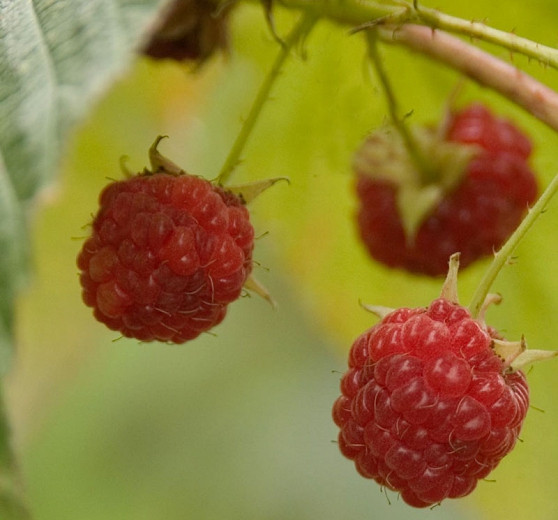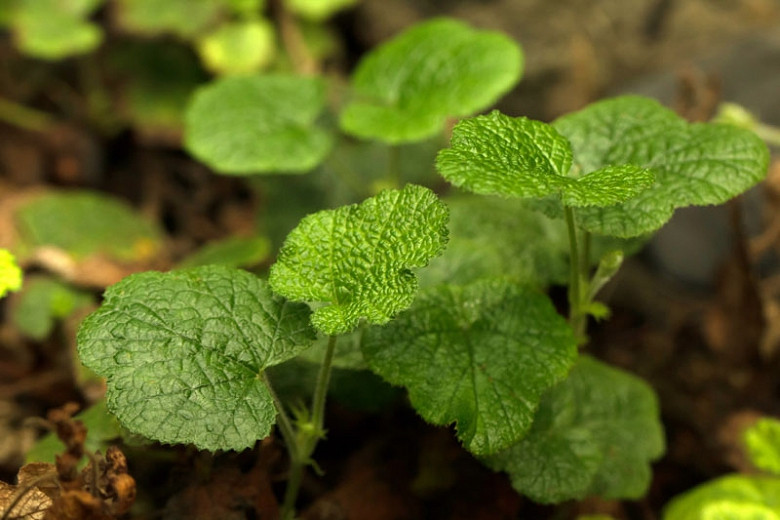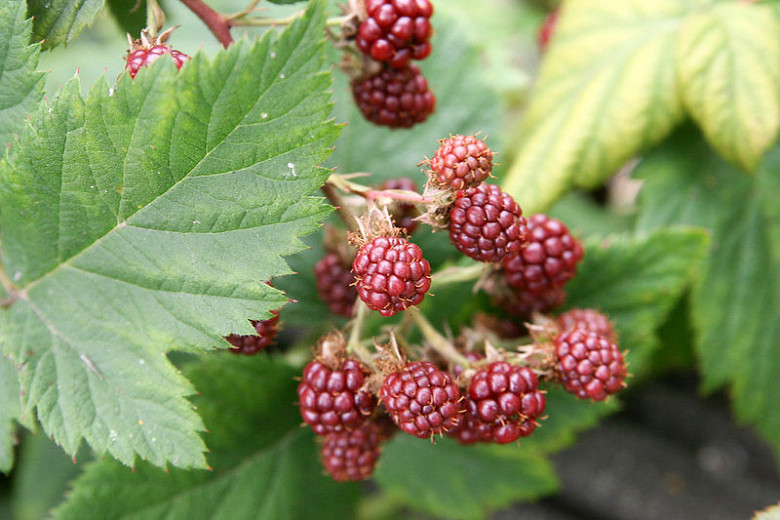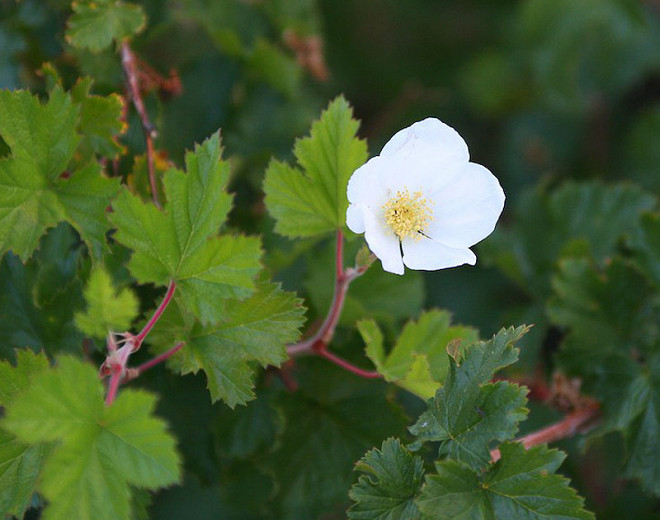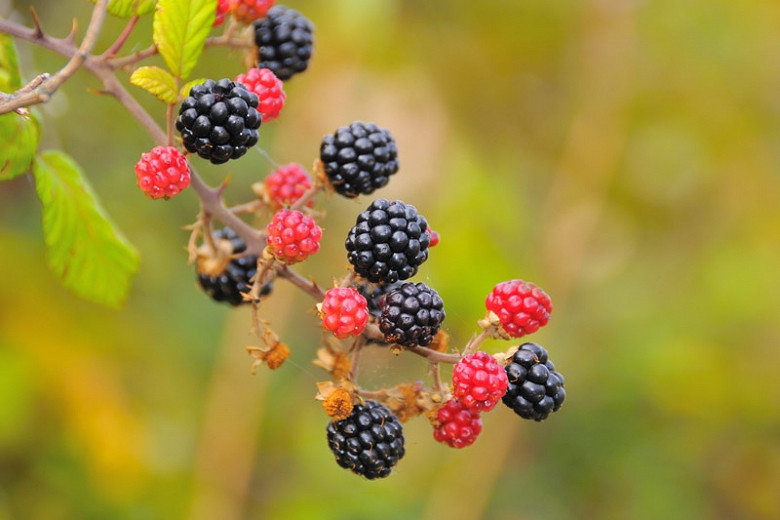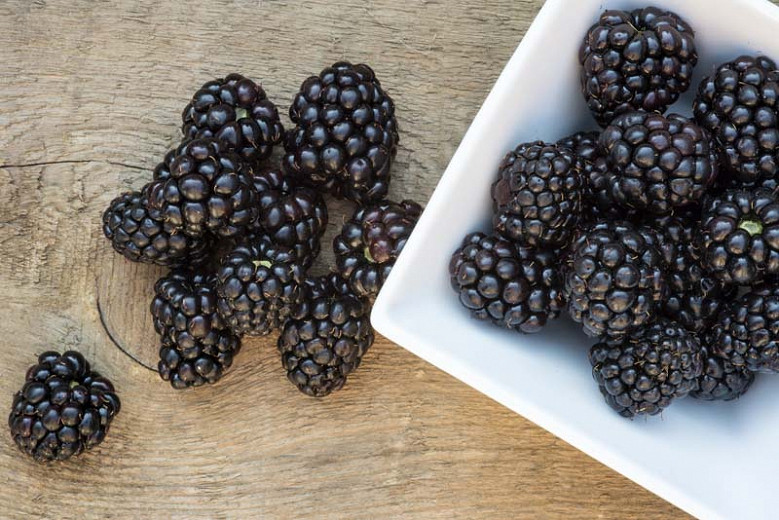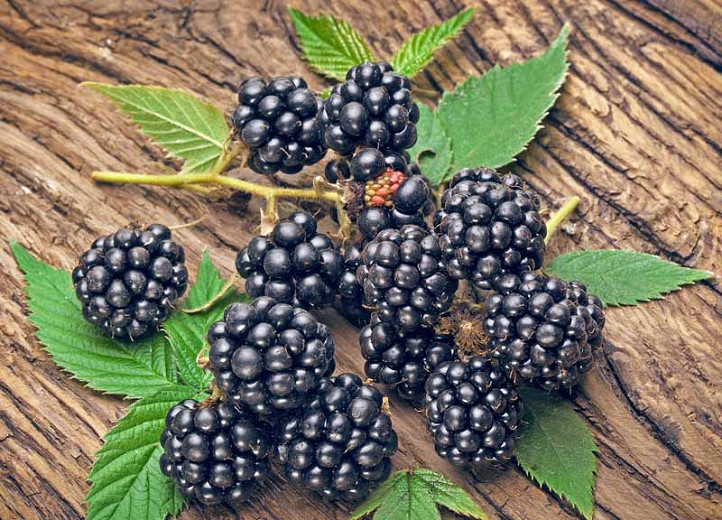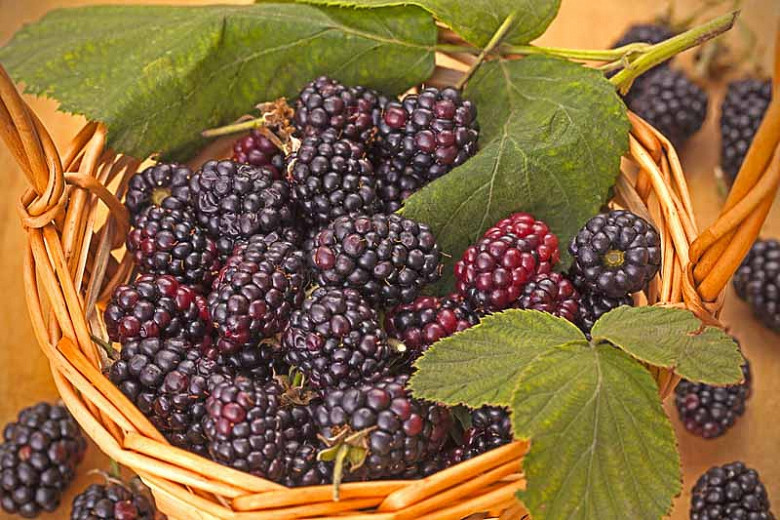Rubus idaeus Caroline (Everbearing Raspberry)
An old favorite, Rubus idaeus ‘Caroline’ (Everbearing Raspberry) is a fall-fruiting cultivar producing high yields of large, highly flavored, red raspberries which are perfect for fresh eating or preserves. This upright, self-fruitful, thorny shrub has a shorter harvest season than most, producing berries for about eight weeks in late summer.
An old favorite, Rubus idaeus 'Caroline' (Everbearing Raspberry) is a fall-fruiting cultivar producing high yields of large, highly flavored, red raspberries which are perfect for fresh eating or preserves. This upright, self-fruitful, thorny shrub has a shorter harvest season than most, producing berries for about eight weeks in late summer. This is a University of Maryland variety that has proven to be one of the most productive varieties for the East and Midwest. It is considered to be the new standard for everbearing varieties. 'Caroline' is vigorous and more tolerant of root rot and yellow rust than 'Heritage'.
- Grows up to 3-4 ft. tall and wide (90-120 cm).
- A full sun to part shade lover, this plant is best grown in organically rich, slightly acidic, moist but well-drained soils. Raspberries dislike waterlogged soils and shallow chalky soils. For best results, plant in a sheltered, sunny position. They will tolerate light shade, but the yield is likely to be reduced.
- Raspberries are usually planted in rows and trained along a post and wire system. But, if you have a smaller garden, you can still grow raspberries, either in containers or trained up a single post
- Fall is the best time to plant raspberries.
- Prune in summer immediately after fruiting. Cut back the tips of everbearers that fruited last fall (top 1/3 of the canes) but leave the rest of cane for summer fruiting. Remove the canes completely after they have fruited over their entire length to encourage the production of new canes. Promptly remove excess new plants and suckers to control spread.
- In late winter, remove any canes damaged by winter and thin, as needed, the remaining canes.
- Can get aphids, glasshouse red spider mite, raspberry leaf and bud mite, leafhoppers and raspberry beetle. May be affected by powdery mildews, raspberry cane blight, raspberry rust, raspberry spur blight or raspberry viruses.
- Propagate from suckers.
Requirements
| Hardiness | 4 – 7 |
|---|---|
| Plant Type | Fruit, Shrubs |
| Plant Family | Rubus – Brambles |
| Exposure | Full Sun, Partial Sun |
| Season of Interest | Summer (Late)Fall |
| Height | 3' – 4' (90cm – 120cm) |
| Spread | 3' – 4' (90cm – 120cm) |
| Spacing | 30″ – 36″ (75cm – 90cm) |
| Water Needs | Average |
| Maintenance | Average |
| Soil Type | Loam, Sand |
| Soil pH | Acid, Neutral |
| Soil Drainage | Moist but Well-Drained, Well-Drained |
| Characteristics | Showy, Fruit & Berries |
| Attracts | Birds, Butterflies |
